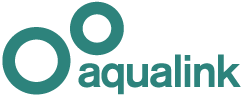This factsheet provides information about young people aged 0-11 years and their parents, living in the City of Whitehorse.
In the early childhood years, children acquire more skills and knowledge than at any other period in their lives, making these years the most critical. The importance of the early years on the long-term development and health and wellbeing of individuals and community is well documented.
Birth and Fertility Rates
The birth rate is calculated by the number of live births per 1,000 of the population. In 2023, the fertility rate (the number of live births per 1,000 women between the ages of 15 and 44 years) was 1.09, lower than the Victorian State average of 1.49. This figure is below replacement level (2.1), i.e. the average number of babies born to a woman throughout her reproductive life is insufficient to replace herself and her partner.
Early Childhood Population
Children aged 0-11 years account for 12.4 per cent of the total Whitehorse population, less than Greater Melbourne at 14.6 per cent.
Maternal and Child Health
Child health assessments are routinely undertaken by the Maternal and Child Health Service in Victoria to monitor child health and development. Ten visits are anticipated according to key ages and stages until a child reaches 3.5 years of age. Data relating to the activities of the Maternal and Child Health Service are collated on a financial year basis by the Department of Education and Training.
The rate of participation for children eligible for an assessment at 3.5 years was 35 per cent in Whitehorse, almost half the Victorian State average of 62.9 per cent (VCAMS Portal, 2017).
Whitehorse recorded higher than the average Victorian rates of fully breastfed children at three months (59.3 per cent compared to 51.8 per cent) and similar rates of fully immunised children at 24-27 months (89.4 per cent compared to 89.6 per cent) (VCAMS Portal, 2014/15).
School Readiness
In 2019 the kindergarten participation rate in Whitehorse was 93.6 per cent compared to the State average of 91.8 per cent. Similarly, Whitehorse recorded marginally lower rates of speech or language problems at school entry (10.9 per cent) in comparison to the Victorian State average (15 per cent).

Source: DHHS (2015), Local Government Area Profile
Childhood Development
The Australian Early Development Census (AEDC) measures how children have developed by the time they start school. It looks at five areas of early childhood development domains: physical health and wellbeing, social competence, emotional maturity, language and cognitive skills, and communication skills and general knowledge.
In 2024, 14.9 per cent of Whitehorse children were considered vulnerable on one or more domains, in comparison to the Victorian State average of 22.3 and Australian average of 23.5.
A further 7.6 per cent of Whitehorse children were considered vulnerable on two or more domains, in comparison to the Victorian average of 11.8 and Australian average of 12.5.

Source: AEDC (2024), Community Profile: AEDC results for local communities
Physical Activity and Healthy Eating
The inner-eastern Melbourne area recorded lower levels of young people who do the recommended amount of physical activity, 24.2 per cent, when compared to the Victorian average of 62.2 per cent. Females were less inclined to achieve the recommended amount than males (VCAMS, 2018).
A similar proportion of children ate the recommended serves of fruit and vegetables (10.0 per cent compared to the Victorian average of 10.8 per cent) (VCAMS, 2018).
Bullying
Fewer children in Whitehorse in Years 5 and 6 reported experiencing recent bullying than the Victorian average (10.8 per cent and 15.9 per cent respectively). Similarly, fewer children in Whitehorse in Years 7 to 9 reported experiencing recent bullying than the Victorian average (12.6 per cent and 17.5 per cent) (VCAMS, 2018).
Links
For more information about EARLY YEARS please refer to:








